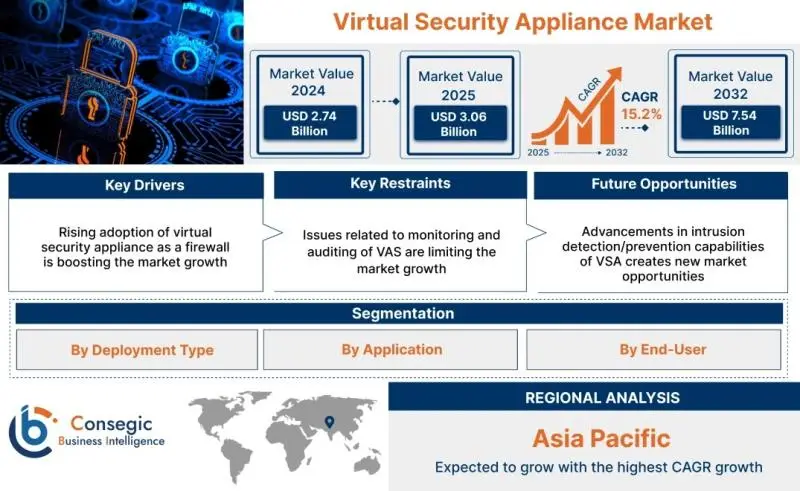virtual security appliance market
The Virtual Security Appliance (VSA) market is witnessing significant growth due to the rising demand for effective security solutions amidst increasing cyber threats. VSAs present a flexible and economical alternative to traditional hardware security appliances, allowing businesses to swiftly implement and manage security services across various settings, including cloud, on-premises, and hybrid infrastructures.
Key factors driving this market’s expansion include the widespread adoption of cloud computing, the increase in remote work, and the escalating complexity of IT environments. Advances in technologies such as virtualization, containerization, and software-defined networking are promoting the use of VSAs by improving their performance and scalability. The growing incidence and sophistication of cyberattacks, along with strict regulatory compliance needs, are driving organizations to invest in advanced security solutions like VSAs to safeguard their critical data.
The VSA market is set to reach over USD 7.54 Billion by 2032, escalating from USD 2.74 Billion in 2024, with a projected compound annual growth rate (CAGR) of 15.2% from 2025 to 2032. The VSA market encompasses software-based security solutions that simulate traditional hardware appliance functionalities, operating within virtualized environments such as hypervisors and cloud platforms.
The market includes various components, such as virtual firewalls, intrusion detection and prevention systems, virtual private networks, web application firewalls, unified threat management appliances, and security information and event management systems. These components cater to diverse industries like financial services, healthcare, government, retail, and telecommunications.
Market segmentation highlights deployment types, applications, and end-users. Cloud-based VSAs are gaining traction due to the growing adoption of cloud services, while network and application security remain significant segments due to the necessity to protect against various cyber threats. Large enterprises are the primary users, but small and medium enterprises (SMEs) are increasingly recognizing the necessity for cost-effective security solutions as well.
However, challenges such as the complexity of deployment, performance overheads, skill shortages, and the need for awareness about VSAs persist. Organizations must navigate these challenges while addressing cost considerations, especially in smaller businesses that may find initial software investments significant. Additionally, the VSA market dynamics vary regionally, with North America leading in adoption but significant growth occurring in regions like Asia-Pacific as cloud computing becomes more prevalent.
Overall, the VSA market is positioned as a crucial component of the cybersecurity landscape, equipping organizations with the necessary tools to mitigate risks, ensure business continuity, and adapt to an ever-evolving threat environment.



